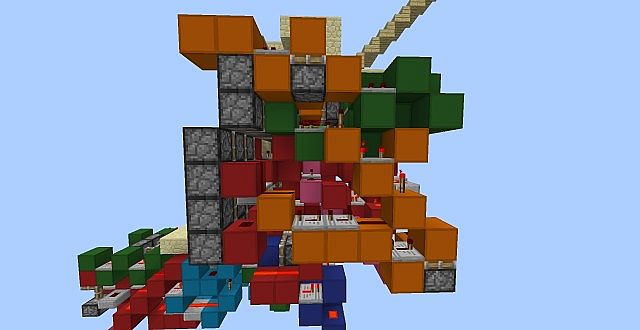

For most cases, phase doesn't matter because they just need pulses every 7 ticks or so. The exact beginning of a cycle depends on the clock, but it is usually the start of either the OFF phase or the ON phase. A long-period clock might be noted as 2 minutes past the start of its ON phase. For example, at one moment a 5 clock might be 3 ticks into its ON phase, 4 ticks later, it is 2 ticks into its OFF phase. The phase of a running clock is the point it has reached in its cycle. While it isn't much discussed in the circuit builds below, there is one additional concept that is occasionally important: Phase. Another option is to use a lever-controlled piston to open or close one of those loops, using either a solid block to transmit power, or a block of redstone to supply it. Whether the output gets stopped high or low depends on the clock and where in the loop players force it. In general, forcing the delay loop high eventually stops the clock, but the output may not respond until the current pulse has made its way through the loop. However, there are a number of approaches here, which are discussed in a separate section.Ĭlocks without an explicit toggle can often have one retrofitted, by wiring a lever or other switch to the controlling block of an inverter, or even to a redstone loop. Even with repeaters in use, 1-clock signals are difficult to handle in other circuits, as many components and circuits do not respond in a timely fashion.Ĭreating long clocks (more than a few ticks) can be more difficult, as adding repeaters eventually gets unwieldy. Indeed, torch based rapid pulses can be too fast for repeaters. There are also special circuits called "rapid pulsers", which produce rapid pulses like a 1 tick clock, but inconsistently due to torches burning out. Using repeaters or pistons allows easy construction of any clock down to 1-clocks, and other devices can also be pressed into service. Using only redstone torches and wire, it is possible to create clocks as short as a 4-clock, sometimes by exploiting glitches. For example, a classic 5-clock produces the sequence. The customary name x-clock is derived from half of the period length, which is also usually the pulse width. 10.6 Simple 3-gametick Piston Clock (G)Ĭlock generators are devices where the output is toggling between on and off constantly.


 0 kommentar(er)
0 kommentar(er)
